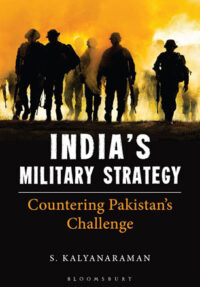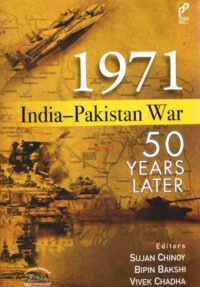Asymmetric Warfare: A View from India
Coined a few years ago, ‘asymmetric warfare’ is an umbrella term that includes insurgent and terrorist campaigns that Western militaries were forced to contend with in the course of external interventions. Asymmetric wars for Western countries are wars of choice, not wars of necessity.
Making the Law of the Sea – A Study in the Development of International Law by James Harrison
The cornerstone of international law is ‘applicability of law based on consent’. Being bereft of any legislative machinery to legislate international law in the international sphere, the statute of the International Court of Justice (ICJ) adumbrates ‘treaty, customary international law and general principles of law, etc.’, as the sources of international law. Treaties (both bilateral and multilateral) formulation, however, is one such mechanism of codification of international law in which consent is given explicitly to a rule of international law.
The Chinese Navy, Its Regional Power and Global Reach
The Chinese People's Liberation Army Navy (PLAN)’s recent accomplishments are impressive but have not gone beyond ‘pocket excellence’, as its overall structure and equipment are still out of date. However, the PLAN now has ships and powerful weapons that enable it to extend its combat range and engage its foes in a relatively large-scale maritime campaign beyond the Yellow Sea—its traditional battlefield. Depending on the nature of operations, it may already be able to carry out blue water missions around the first island chain in the West Pacific.
The Creation of Indian Integrated Commands: Organisational Learning and the Andaman and Nicobar Command
India took an unprecedented step 10 years ago by setting up a joint theatre operational command for the Andaman and Nicobar Islands (ANC). This article seeks to examine the following questions: why did India decide to establish its first joint operational command? Why has the creation of this and other unified commands been so incremental in the Indian context? What are the arguments for and against jointness, integration and joint operational commands in the Indian context?
India’s Maritime Core Interests
While the maritime doctrine was published by the Indian navy in 2004 and improved upon in 2007, the core interests identified were as seen through the prism of the navy. The national maritime interests of India are distinctly different from the ones identified by the Indian navy and need to be analysed to understand the nuances and the dimensions of such interests so as to promote India's maritime power potential.
A Neo-Nixon Doctrine for the Indian Ocean: Helping States Help Themselves
In recent years the Indian Ocean has received significant attention from the defence-intellectual community in the United States. However, the actual strategic importance of the region to US interests is less clear. In an environment of fiscal austerity, if commitments abroad are not firmly linked to interests, any significant involvement in a region of secondary concern could contribute to ‘imperial overstretch’.











